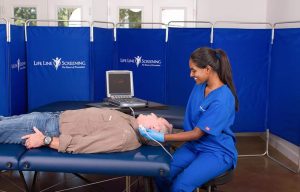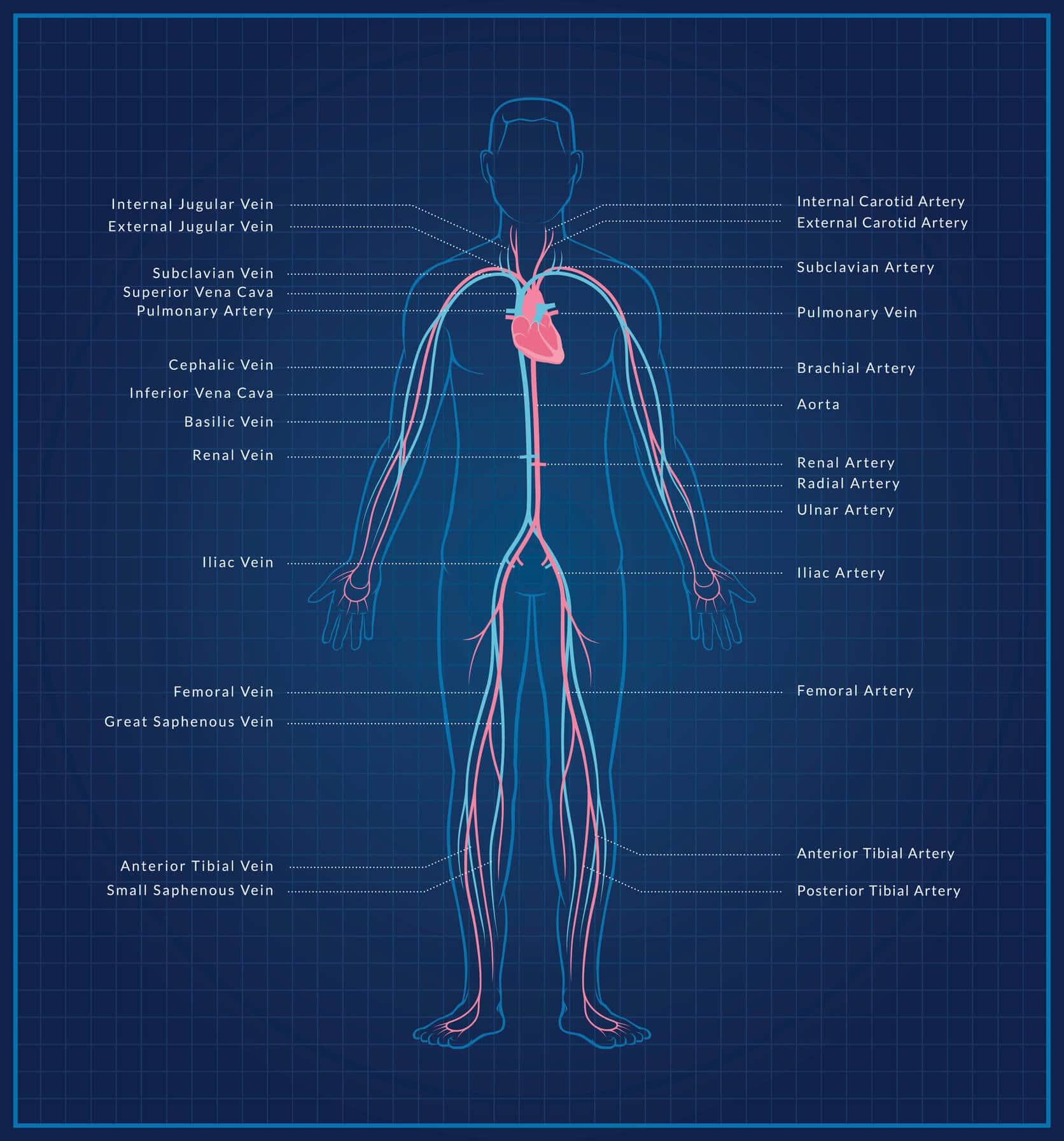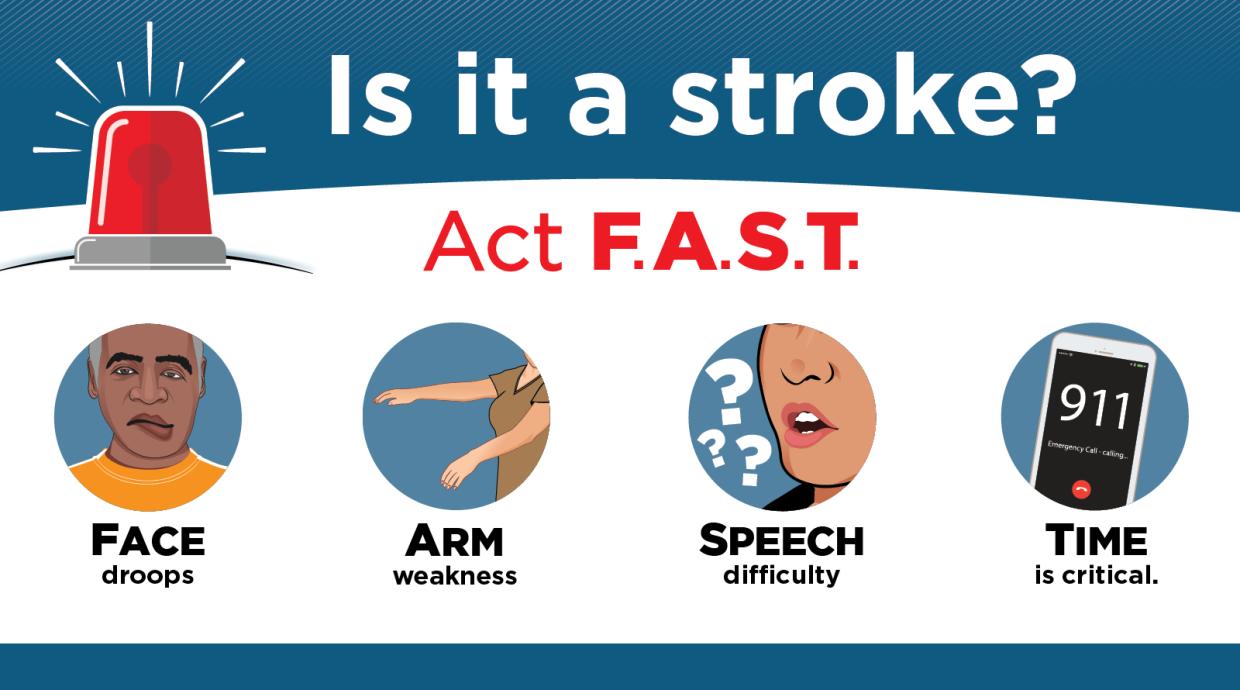Home » Health Education » Carotid Artery

Most Popular Carotid Artery Articles
- 5 Ways to Prevent Arterial Plaque
- Carotid Artery Health: AHA Reports on Study About Carotid Plaque-Related Strokes
- Clot-Busters Might Be Useful for ‘Previously Dependent’ Stroke Patients
- How Heart Disease Increases Our Risk From COVID-19
- How to Lower Your Risk of Stroke
- How to Prevent Carotid Artery Disease
- Is Carotid Artery Disease Painful?
- Is Carotid Artery Disease Treatable?
- Men and Stroke: What You Need to Know
- Study With Life Line Screening Data Finds Value in Screening Arteries for Plaque Build-up
- Oxford Research Endorses Carotid Screening
- Quiet Health Threats: Ailments People Don’t Notice Until It’s Too Late
- The Right Diet to Help You Lower Your Risk of Carotid Artery Disease
- Shingles Increases Stroke Risk
- Know the Signs and Symptoms of Stroke
- Smoking & Carotid Artery Disease
- Don’t Let a Stroke Be the First Sign You Have Carotid Artery Disease
- Stroke Dangers in the ER
- Studies Show Carotid Artery Screening Helps Predict Strokes and Heart Attacks Early
- The Scan That Saved My Life
- Thyroid and Atherosclerosis
- Understanding Warning Signs of A Stroke
- What causes a stroke?
- What You Need to Know about Stress and High Blood Pressure
- Why Time to Treatment Makes a Big Difference With the Outcome of a Stroke
What is Carotid Artery Disease?
Carotid artery disease (also called atherosclerosis) is when a large buildup of cholesterol plaque clogs
the arteries, in this case specifically the carotid arteries that are located in the neck that take blood from the heart to the brain. Restricted blood flow causes high blood pressure, but the most significant danger
associated with it is the
increased likelihood of stroke.
Most carotid artery disease is progressive, meaning it gets worse as it builds up over time. Because of the gradual nature of the disease, it’s easy to have carotid artery disease for years and not know. Unfortunately, the
way most people find out something is wrong is only after they have a stroke. If the carotid arteries are blocked with cholesterol, it is very likely others throughout the body are as well. This reality can bring many other
related health problems, including risk of heart attack. When this happens it’s called
coronary artery disease. Whenever doctors speak on the
dangers of high cholesterol levels, this is why. Restricted blood flow causes high blood pressure (which is
harmful in and of itself) but the increased danger for stroke and heart attack comes from the possibility of a piece of plaque buildup breaking off in an artery and completely clogging it. To fully understand carotid artery
disease and how it affects your body, take a look at what a healthy circulatory system looks like.
How your carotid artery works
While some people may use the words “vein” and “artery” interchangeably, they in fact have different jobs. Veins carry low-oxygen blood from throughout the body to the heart to be oxygenated. To do this, the heart takes
oxygen from the lungs and infuses it into the blood that moves through the four chambers of the heart. Arteries then take this oxygenated blood away from the heart to the parts of the body that need it to function such as
muscles, organs and the brain. The carotid arteries are especially large arteries that run up each side of the neck and carry blood to the brain. These are extremely important, as your brain can only go
one minute without oxygen before brain cells start dying.
The Link Between Carotid Artery Disease and Stroke
Every year, 140,000 people die from a stroke. That’s enough to make it the
third-leading cause of death in the U.S. And yet, many people don’t understand what a stroke is,
why it happens and, most importantly, what can be done to help prevent it.
What’s a stroke and why does it happen?
Like every part of your body, your brain needs blood to function. A stroke happens when blood flow to your brain is interrupted or stops altogether, which causes it to stop working. Even a short stop in blood flow can cause
serious problems, including brain damage. A blood blockage that passes quickly is a
Transient Ischemic Attack, or TIA. These are often referred to as mini-strokes
because the signs are similar but they are much more brief. People who suffer from a TIA can even feel relatively fine not long after an attack. Unfortunately, this can cause people to underestimate how serious they can be.
Ischemic Strokes make up 87% of all strokes and are a much more severe version of a TIA. In
this case the blood is fully blocked from the brain and does not pass quickly or easily. If not given medical attention quickly, a stroke can cause brain damage or death. If you experience any signs of a stroke, no matter
how brief or subtle, you need to call a doctor immediately, because a full-blown stroke may well be on its way. What are the signs of a stroke? Because they occur suddenly and often without warning, strokes are extremely
difficult to predict. However, there are some signs to watch for that indicate a person is having a stroke.
Signs of a stroke
- Sudden numbness or weakness in the face, arm or leg, especially on one side of the body
- Sudden confusion, trouble speaking or difficulty understanding speech
- Sudden trouble seeing in one or both eyes
- Sudden trouble walking, dizziness, loss of balance or lack of coordination
- Slurred speech
- Sudden severe headache with no known cause
A quick and easy way to assess if someone is having a stroke is to remember the acronym F.A.S.T.
- Face: Ask the person to smile. Does their face droop on one side?
- Arms: Ask the person to raise their arms. Does one arm drift downward?
- Speech: Ask the person to repeat a simple phrase. Does the speech seem slurred or strange?
- Time: If you see any of these signs, call 9-1-1 right away.
Are there any early warning signs of a Stroke?
While strokes are difficult to predict, there are signs that arteries are starting to become too clogged and are having trouble transporting enough oxygen throughout the body. It is important to note that any of these
individually do not necessarily point to critically clogged arteries—however, they are cause for concern. If you are experiencing any of them you should consult your physician for the best course of action.
Lower back pain
The discs between vertebrae in your back need a constant flow of oxygenated blood to stay healthy and strong. As blood flow is restricted they can become brittle and weak. The result is
chronic lower back pain or pinched nerves.
Painful or numb extremities
Your hands and feet are functionally the body parts that are the farthest away from the heart. So, when blood flow is restricted they are often among the first signals that something is wrong. People usually experience this
as numbness and pain. This can also lead to peripheral artery disease, which is when a cholesterol blockage gets lodged in the leg
and causes damaging inflammation.
Erectile Dysfunction
Atherosclerosis is the main cause of ED. Because clogged arteries restrict blood flow, it can impair
one’s ability to get and maintain an erection. While this is a difficult condition to have, those that experience it should be aware it could be the sign of a larger health problem. While none of these are directly related
to carotid artery disease, the health of one’s whole cardiovascular system is linked. If arteries are being clogged with cholesterol in the arms, legs, or back, chances are high that the carotid arteries are seeing a
blockage as well. There are other medical conditions that can also contribute to increased stroke risk, like diabetes, heart disease and
atrial fibrillation, as well as high blood pressure. If you have any of these, treating them needs to be your top priority.
Carotid artery disease screenings
Early detection can save lives. Many
people have a significant amount of cholesterol buildup in their arteries and aren’t even aware. Fortunately, a
carotid artery disease screening is quick, painless and non-invasive. During one of these procedures, a trained
sonographer will use an ultrasound machine on either side of the neck to record the presence or absence of plaque buildup in each of the carotid arteries. They’ll also be able to measure the rate of blood flow as a way of
assessing arterial health. Results are presented in four categories: normal, mild, moderate or significant plaque buildup. These categories are separated by nationally-accepted criteria so that results will be universal no
matter where screenings are done. If your arteries fall anywhere between normal and moderate, it can be helpful to be screened every 1-3 years to track arterial health. If your results indicate significant plaque buildup,
you should see your doctor within 48 hours. Fortunately, there are plenty of resources that lay out exactly what to expect during a test.
Also, simply having an accurate picture of your arterial health can help your doctor put a plan in place to keep you healthy.
How to reduce your risk of stroke
If you do have cholesterol buildup, there are several things your doctor might do, such as prescribe a cholesterol-lowering medication or blood thinners. There are also many things that you can do on your own to lower your
risk. Many of them you will probably have heard before, but that doesn’t make them any less important.
Monitor your cholesterol level and blood pressure
Your cholesterol level is what contributes to arterial plaque buildup. When buildup gets to significant levels it then restricts blood flow throughout your body and increases your blood pressure. The good news is there are
lots of good options for testing your cholesterol level at home.
Stop smoking
Smoking has several adverse effects on the body, many of them on the cardiovascular
system. Smoking damages the cells that line blood vessels, causing inflammation, makes blood more likely to clot, raises triglycerides, and causes the thickening and narrowing of blood vessels, allowing less blood to pass
through veins and arteries.
Stay active
Regular physical activity contributes to a healthier heart. Exercise won’t unblock
arteries, but it will allow the heart to pump more blood throughout the body with less strain and stress on the system.
Maintain a healthy weight
An increase in body fat has been
directly linked to poorer cardiovascular health.
More body fat leads to both ventricular and atrial enlargement, restricting blood flow. The extra weight also puts additional strain on the heart. There are other medical conditions that can also contribute to increased
stroke risk, like diabetes, heart disease and atrial fibrillation. If you have any of these, treating them needs to be your top priority.
The Bottom Line
Your carotid arteries are the main highways of blood to your brain, so it’s vitally important to take care of them. Carotid artery disease is easy to screen for and knowing where you stand is an important first step toward
taking control of your health.
Peace of Mind With Life Line Screening
At Life Line Screening, we have years of experience helping people prevent major medical issues with vital early detection services, including checking your risk for carotid artery disease. In fact, screenings are our
specialty. We partner with community centers to help people get quick, easy access to the screenings they want to stay on top of their health. No lengthy doctor’s visits, no complicated insurance to deal with, just
convenient screenings for health-conscious people conducted by trained professionals.
800.718.0961. We’d love to help.
Topics:
Abdominal Aortic Aneurysm


